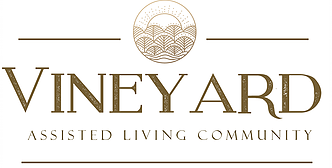
Seniors and Hunger: Having food and still being “food insecure.”
We live in an age where hunger issues in America, just shouldn’t exist! Though, the hard truth is that they still do. Did you know that one in six seniors face the threat of hunger and not having proper nourishment? Not only that, but hunger among our senior population has more than doubled since 2007, according to the National Foundation to End Senior Hunger. What we have here is a wide-spread, multi-faceted issue.
Individuals can have food and still encounter what is considered food insecurity. This includes the seniors that not sure where their next meal is coming from, and also seniors that do not have access to healthy foods. To understand this issue fully, you have to understand what is called food insecurity.
According to the National Journal of Nutrition, food insecurity by definition means that one has a limited or uncertain availability of nutritionally adequate or safe foods to eat; It also is defined by one’s limited ability to acquire nutritionally acceptable foods. Essentially, one does not have access or the availability of the foods they require to properly sustain oneself. We are talking about more than just a lack of food. One can have food, but it can be of poor quality.
There are many factors that contribute to food insecurity. We can’t begin to touch on all of them at once but there are a few glaring ones to point out. Setting aside the socioeconomic factors of class, race, and access to food in geographic areas considered to be “food” deserts, we have a host of other challenges to overcome to combat this epidemic.
First let’s talk about individuals that live alone. Nearly half of all senior households in which a senior is living alone, experiences food insecurity. Now, compound that factor with age and inability to drive—what we have here is food insecurity. Statistics have gone on to show that individuals in this scenario are even more vulnerable to illnesses in addition to just dementia and depression. Senior hunger costs our healthcare system nearly $130 billion each year according to AARP.
Next, let’s think just about the quality of the food our seniors have easy access to and its role with developing diabetes. I’m talking about those salty snacks, over-processed packaged foods, sugary foods and fast foods. If the quality of the food our seniors eat is not nutritionally adequate, and it is paired with an inconsistent eating schedule—it undoubtedly paves the way for type 2 diabetes. Now let’s also think about how coupling food insecurity with type 2 diabetes is going to affect a senior. Not only is the senior facing food insecurity, but that individual also most likely has anxiety over how they are going to successfully self-manage their symptoms and follow a proper diet.
With this becoming a vast issue aging individuals face, many across that nation have stepped up with solutions that are combating senior hunger and senior food insecurity. Meals on Wheels, the Senior Farmers Market Nutrition Program, and Commodity programs all help combat this issue.
In our community at Vineyard Assisted Living we focus on eliminating food insecurity. We focus on providing three balanced, nutritious meals each day. We also provide a snack bar with fresh fruit, daily baked features and beverages that our residents and families have access to any time of day, 24/7 for free. An additional program that we are piloting is a meal delivery program for our seniors that are looking to access senior resources or who are considering a senior retirement community. Our chef and the culinary team will prepare a warm meal and we will bring it right to the senior’s doorstep.
While hunger is a big issue, we hope to make a small difference right here in our local community. For more information on our dining program or to make arrangements for a meal delivery, please check out our new website or call us at (269) 775-0001.
